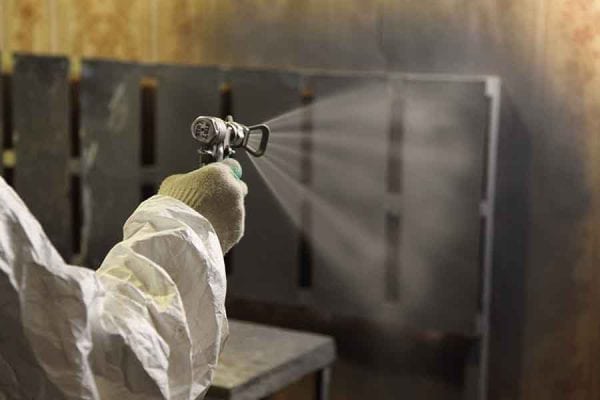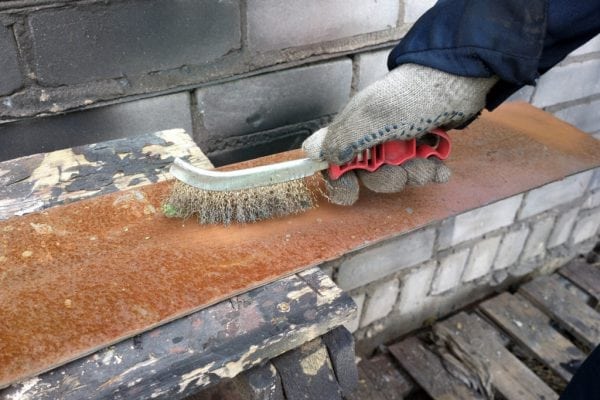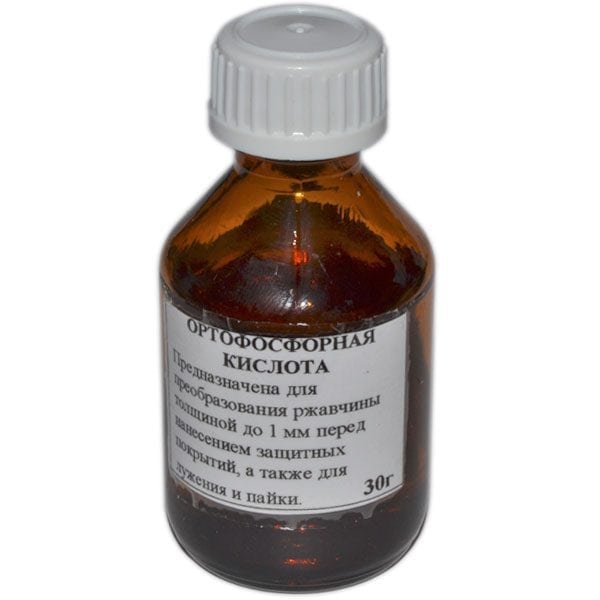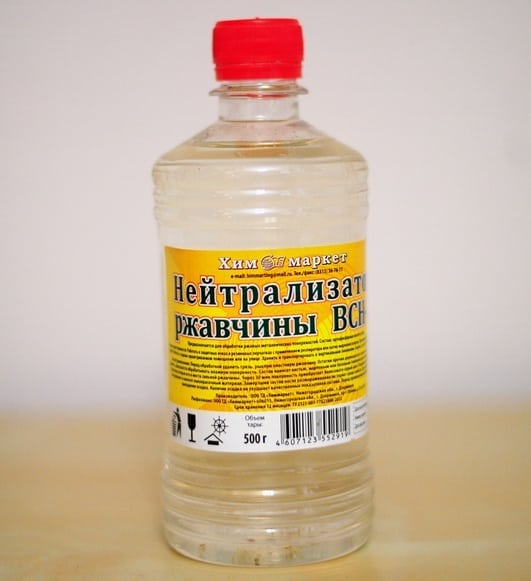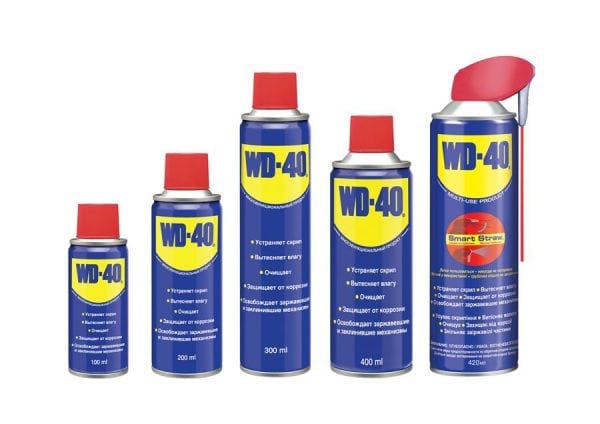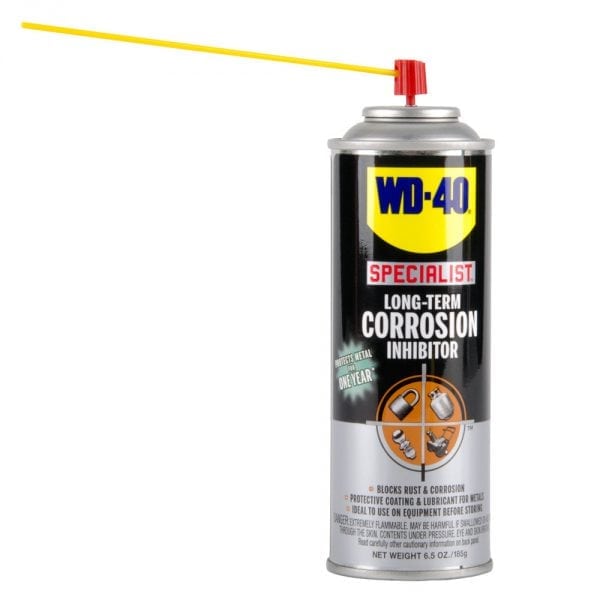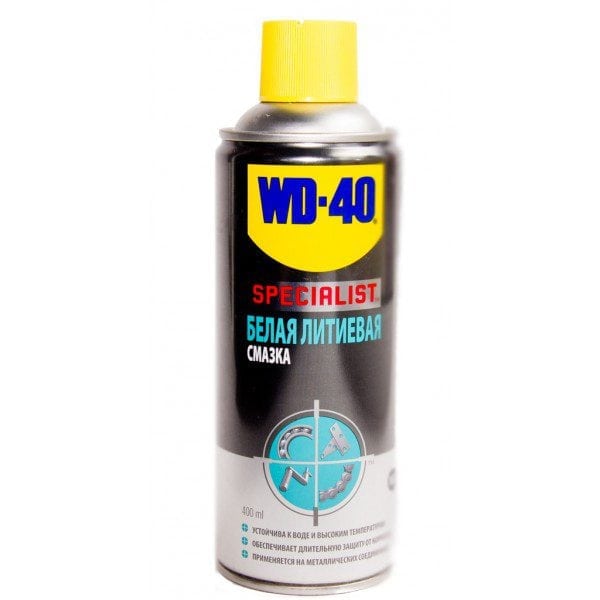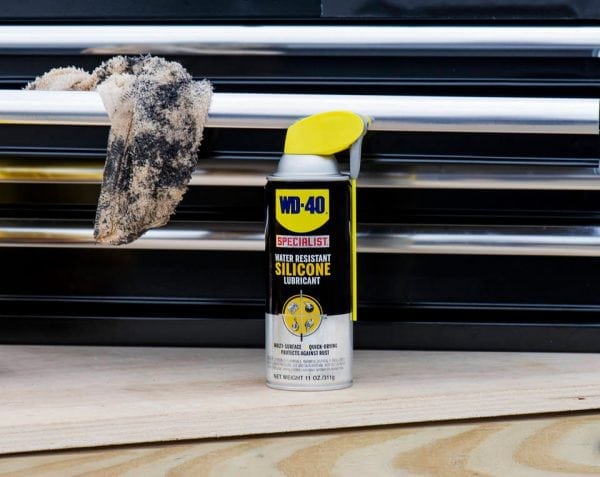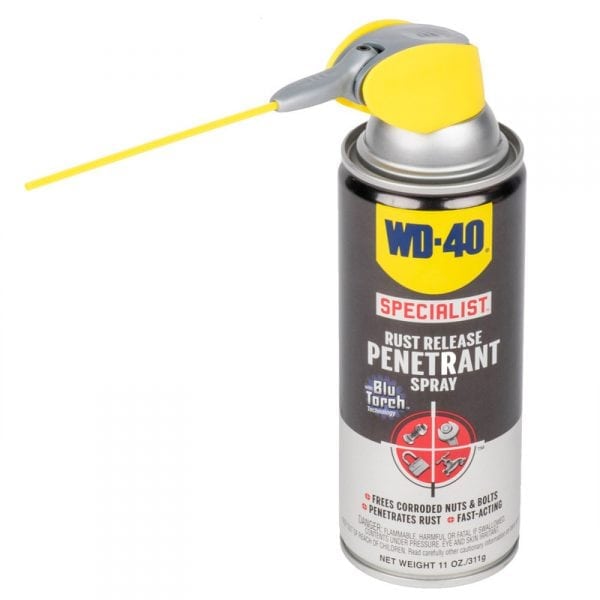It is almost impossible to completely prevent the formation of metal corrosion: sooner or later, the metal will begin to rust. Moreover, there are ways to significantly extend the life of the material, if you follow the rules of operation of a metal product and use special tools that slow down corrosion processes. If rust has already appeared, it is necessary to remove it (by chemical or mechanical means) in order to prevent corrosion processes from developing.
- Preventive actions
- Mechanical removal
- Chemical methods
- Orthophosphoric acid
- Rust converters
- The line of anti-corrosion products "WD-40"
- Long acting inhibitor
- Protective white lithium grease
- Waterproof silicone grease
- Rust remover spray
- Rust remover
- Folk rust removal methods
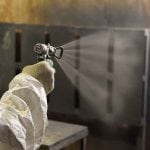
Preventive actions
To prevent the detrimental effect of corrosion, it is recommended to use special chemical protective equipment. Such agents include inhibitors, which are substances that slow down or completely stop a particular chemical process. As a result of the action of the inhibitor, a thin coating in the form of a protective film appears on the surface of the material. It is this film that protects the metal from rust.
One of the most popular inhibitors to date is Rust stop. The drug has a penetrating effect, as a result of which moisture is removed from the material, and a polymolecular layer is created on the surface. The tool is non-toxic, easy to use.
to contents ↑Mechanical removal
For mechanical rust treatment you will need a metal brush or an abrasive coarse-grained skin. Using the skin, you can clean the material in a “dry” or “wet” way (wetting the skin with kerosene or white spirit).
Other mechanical cleaning options include the use of the following hardware:
- orbital sander with abrasive wheels;
- sandblasting apparatus;
- electric drill nozzles;
- grinders.
The use of hand tools (brushes or sandpaper) is justified on insignificant surfaces. The advantage of surface treatment with hands is the possibility of more thorough passage in small or inaccessible areas.
A nozzle for an electric drill, grinder or grinder can speed up surface cleaning by several times. However, such methods are not very accurate: too large a layer of metal is removed.
Sandblasting equipment is the best way to remove rust.
Removal of corrosive products occurs due to the processing of metal by a powerful stream of sand. In this case, intact metal fully retains its structure.
The disadvantage of the method is the high cost of new equipment.
to contents ↑Chemical methods
Chemical methods involve the use of the following groups of drugs:
- rust converters;
- acid (primarily phosphoric);
- folk remedies.
Orthophosphoric acid
This substance belongs to classical solvents and is a part of many rust control agents.
The method of using phosphoric acid is described below:
- The substance is applied in a thin layer to a place affected by corrosion.
- Next, you need to wait for 30 minutes until the reaction is complete.
- The procedure ends with wiping the dry treated surface.
Phosphoric acid removes traces of rust, and also promotes the formation of a phosphate water-repellent film. This film slows down the oxidation of the metal, preventing the further development of the corrosion process.
A 30% acid solution is used to remove rust. The advantage of phosphoric acid in comparison with other acids (for example, sulfuric) is a more gentle effect on the metal.
to contents ↑Rust converters
The principle of operation of rust converting agents consists in converting corrosive products into a harmless or protective layer, which can then be treated with paint or varnish.
The following are the most prominent rust converters on the market:
- BCH-1. After applying this acid neutralizer, the treated area becomes gray. It remains only to wipe the stain with a dry rag, along with the remnants of rust.
- Zinc-Auto Zinc Spray Aerosol. This tool is a degreasing solution capable of removing traces of corrosion from a metal surface. After applying the solution, a protective film forms on the surface.
- Rust converter SF-1. The composition is based on phosphates. It is used for processing steel, cast iron, aluminum and galvanized surfaces before applying varnish or paint. The modifier has an inhibitory effect, since the film that occurs on the metal after its processing extends the life of the painted surface for a period of 10-12 years.
- Rust modifier Berner. The drug has a deoxidizing effect. The basis of the modifier is molybdenum. The product is effective against even very rusty surfaces. For example, the converter processes rusty bolts that cannot be removed by standard means. Available as a spray.
- Corrosion inhibitor B-52. This acid modifier is available as a gel. Its main advantage is the absence of surface spreadability. After dissolution of the rust, the remnants of the gel are washed off the metal.
The line of anti-corrosion products "WD-40"
The American company "Rocket Chemical" produces a popular on the market line of anti-corrosion agents - "WD-40." The drugs are widely used by both professionals and home masters.
The line includes five products: a long-acting inhibitor, a protective lithium grease, a waterproof silicone grease, a spray and a rust remover.
to contents ↑Long acting inhibitor
The drug is used for year-round protection of metal products located on the street. The manufacturing company guarantees protection against rust for two years if the product is indoors, and for items in the open air the warranty extends for a year.
The composition is a spray that includes a vapor-phase anticorrosion inhibitor that creates a protective layer on a metal surface, preventing direct contact of the material with air and moisture. It is recommended to use an inhibitor to protect locks, gas cylinders, working tools, door hinges, process chains and cables, steel doors, and automobile parts.Also, the drug can be used to process any other items whose operation is carried out in conditions of high humidity.
to contents ↑Protective white lithium grease
The drug is applied to metal for the purpose of preventive protection, that is, inherently it is an inhibitor. A thin protective film forms on the surface. Moreover, the film is not washed off under the influence of precipitation, does not melt in the sun and does not freeze in cold weather.
The drug is available in the form of a spray and is recommended for the treatment of door hinges or guides, chains and sprockets of mechanisms, cables and rods.
In addition, lithium grease is often used to preserve items in stock for long-term storage.
to contents ↑Waterproof silicone grease
A characteristic feature of the lubricant is its ability to dry quickly. It is also worth noting that the lubricant leaves virtually no residue after lubricating the parts. In addition to the described uses for inhibitors, silicone grease is recommended for the treatment of moving mechanisms. The lubricant does not contain petroleum products, and therefore does not damage rubber, plastic and vinyl surfaces. After drying, a transparent non-sticky coating forms.
to contents ↑
Rust remover spray
The spray operation is based on the capillary principle, according to which the fluid moves through small channels and cracks, despite the force of gravity. Due to this feature, the spray is applicable for processing hard-to-reach areas where it is difficult to remove rust even by manual methods.
The spray can not only remove rust, but also act as an inhibitor, preventing its reappearance in the future. The drug is used to treat highly rusted surfaces, including bolts and threaded joints. The spray is safe for non-metallic surfaces.
to contents ↑Rust remover
The contents of the solution consists of non-toxic elements that are biodegradable. The solution is designed to remove the effects of corrosion from surfaces. To clean the metal from rust, the part is immersed in a container with a solution for 3-4 hours. If the product is very rusty, the procedure will take 7-8 hours. The solution is suitable for processing miniature parts, as well as for cleaning large items (if there is an appropriate container).
to contents ↑
Folk rust removal methods
In addition to factory-made preparations, so-called folk recipes can be used to remove rust. Most often we are talking about the drink "Coca Cola", a cleaning agent "Cilit" or a mixture of kerosene with paraffin.
Below is more information about each of the tools:
- The rust effect of Coca Cola is related to the presence of phosphoric acid in the beverage. To remove rust, apply the drink to the problem area. You can use soaked rags or a piece of foil. A method of immersion in a container with a drink is also used.
- Cilit is often used to remove rust on household appliances in bathrooms and kitchens. In this case, the cleaning agent can be used to remove traces of corrosion on other metal objects, for example, automotive parts. However, it should be borne in mind that this tool is capable of corroding paint.
- You can also clean the surface of rust with a solution of kerosene and paraffin in a ratio of 10 to 1. Before use, the composition must be kept for 24 hours. Next, the mixture is applied to the rusted place for 12 hours. The procedure ends with cleaning the surface with a rag.
When handling chemicals, safety precautions should be followed. First of all, it is necessary to protect the skin, respiratory system and eyesight from the ingress of dangerous particles.You will need a respirator, goggles and gloves.

